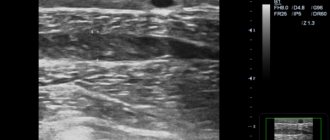Diabetes mellitus is one of the most serious health problems in the world. One of the main complications of diabetes is a blood vessel disease called diabetic angiopathy. Impaired nutrition of the nerve trunks leads to the development of another problem in patients with diabetes - neuropathy.
Diabetic angiopathy
Diabetic angiopathy is a vascular lesion that occurs in people with diabetes. In diabetes, cholesterol and calcium gradually accumulate in the walls of the arteries, which leads to their obstruction and disruption of the blood supply to the tissues.
Diabetic angiopathy is divided into two main types: microangiopathy (damage to small vessels) and macroangiopathy (damage to large main arteries), and there is often a combination of both.
Macroangiopathy develops in the vessels of the heart and lower extremities, being essentially their malignant atherosclerosis.
Microangiopathy most often manifests itself in damage to the arteries of the eyes (retinal damage - diabetic retinopathy) or kidneys (diabetic nephropathy).
Diabetic neuropathy
Diabetic neuropathy is a type of nerve damage that can occur when the vessels in the nerve trunks are affected. Diabetic neuropathy most often develops in the nerves of the legs and feet.
Depending on the affected nerves, symptoms of diabetic neuropathy can range from pain and numbness in the extremities to complete loss of sensation in the feet and hands, with the development of lesions and purulent complications.
Diabetic neuropathy is a very common complication of diabetes. However, it is often possible to prevent diabetic neuropathy or slow its progression through strict blood sugar control and a healthy lifestyle.
Causes of diabetic angiopathy and neuropathy
It is known that diabetes mellitus causes hormonal and metabolic disorders, which cause the deposition of cholesterol plaques and inflammatory changes in the walls of blood vessels, which leads to the development and clinical manifestations of diabetic angiopathy. However, not all diabetics complain of manifestations of angiopathy. This complication of diabetes depends not only on the hormonal background of a particular patient, but also on his genetic characteristics.
Diabetics with high blood pressure, smokers, and alcohol abusers have more pronounced and malignant manifestations of diabetic angiopathy.
Long-term exposure to high blood sugar can damage fine nerve fibers, causing diabetic neuropathy. The main cause of nerve damage in diabetes is considered to be microangiopathy of the vessels supplying the nerves. Their blockade in diabetic angiopathy leads to a deficiency of oxygen and nutrients in the nervous tissue and to the death of nerve fibers.
How does angiopathy appear?
The mechanism of origin and development of diabetic angiopathy is not fully understood. The complexity of diabetes mellitus as a primary disease is all to blame. Too many factors and risks can lead to it and it occurs in too many different ways. It is only known for certain that the impetus for the appearance of symptoms of the disorder is vascular atherosclerosis. The development of the disease occurs gradually and in the first stages goes unnoticed by the diabetic.
At first, prolonged walking causes pain in the lower extremities and slight numbness. Then the patient begins to notice that the temperature of the legs is noticeably reduced compared to the rest of the body. And finally, pallor and cyanosis of the tissues appear, and convulsions often make themselves felt. The blame for what is happening lies with cholesterol plaques, which literally fill small and large vessels, reducing blood circulation.
Types of diabetic angiopathy
Diabetic nephropathy develops when the small arteries of the kidneys are damaged and leads to disruption of their function, up to the development of severe renal failure. Diabetic nephropathy is manifested by the appearance of protein in the urine, severe arterial hypertension, and increased levels of creatinine and urea in the blood.
Diabetic retinopathy develops when the retinal arteries are damaged. It is characterized by changes in the vessels of the fundus and hemorrhages in the retina. Can lead to retinal detachment and complete blindness.
Angiopathy of the lower extremities in diabetes mellitus develops through four stages:
- The first stage has no clinical symptoms, however, when examining the vessels, thickening of the arterial walls and their calcification can be detected.
- The second stage is manifested by the appearance of pain when walking over a certain distance (intermittent claudication)
- The third stage is characterized by the appearance of pain in the legs at rest, especially when lying horizontally. If you lower your legs, the pain decreases significantly.
- The fourth stage is manifested by the appearance of trophic ulcers and necrosis on the legs, and diabetic gangrene often develops. This condition is called diabetic foot syndrome.
Our advantages
"Moscow Eye Clinic" offers comprehensive diagnostics and effective treatment of eye diseases. Modern equipment and the high professional level of specialists working in the clinic eliminate diagnostic errors.
Based on the results of the examination, each visitor will be given recommendations on choosing the most effective methods of treating the eye pathologies identified in them.
Types of diabetic neuropathy
There are four main types of diabetic neuropathy. Most develop gradually, so this complication may not be noticed until serious problems arise.
Peripheral polyneuropathy
Peripheral neuropathy is the most common form of diabetic neuropathy. First, problems with sensitivity develop in the legs, then signs of neuropathy may appear in the arms. Symptoms of peripheral neuropathy are often worse at night and may include:
- Numbness or decreased ability to feel pain or changes in temperature.
- Tingling or burning sensation.
- Sharp pain or cramps.
- Increased sensitivity to touch - for some people, even the weight of a sheet can be excruciating.
- Muscle weakness.
- Loss of reflexes, especially in the ankle.
- Loss of balance and coordination.
- Serious foot problems such as ulcers, infections, strains and bone and joint pain.
Autonomic neuropathy
The autonomic nervous system controls the heart, bladder, lungs, stomach, intestines, genitals and eyes. Diabetes can affect the nerves in any of these organs, which can cause:
- Problems with urination - urinary retention or incontinence due to damage to the autonomic innervation of the bladder.
- Constipation or uncontrolled bowel movements.
- Slowing of gastric emptying (gastroparesis), leading to nausea, vomiting, bloating and loss of appetite.
- Difficulty swallowing
- Impaired potency in men
- Vaginal dryness and other sexual disorders in women
- Increased or decreased sweating
Diabetic amyotrophy
Diabetic amyotrophy affects the large nerves of the limbs, such as the femoral and sciatic nerves. Another name for this condition is proximal neuropathy, which most often develops in older people with type 2 diabetes.
Symptoms usually occur on one side of the body and include:
- Sudden, severe pain in the hip or buttock
- Thigh muscle atrophy
- Difficulty getting up from a sitting position
Mononeuropathy
Mononeuropathy involves damage to a specific nerve. The nerve may be in the face, torso, or leg. Mononeuropathy is also called focal neuropathy. Most often found in older people.
Although mononeuropathy can cause severe pain, it usually does not cause any long-term problems. Symptoms gradually decrease and disappear on their own after a few weeks or months. Signs and symptoms depend on the specific nerve affected and may include:
- Double vision due to damage to the oculomotor nerve
- Facial paralysis with facial asymmetry
- Pain in the lower leg or foot
- Pain in the lower back or pelvis
- Pain in the anterior thigh
- Pain in the chest or stomach
- Weakness in the hand, with damage to the nerves of the brachial plexus.
Preventive measures
To prevent complications of diabetes, it is necessary to continuously monitor the disease. Prevention is based on compliance with the following rules: daily repeated measurement of sugar and blood pressure, a strict diabetic diet, regular visits to an endocrinologist, an annual full examination by a nephrologist, cardiologist, and ophthalmologist.
It is also necessary to take prescribed medications, perform a complex of exercise therapy, and eliminate bad habits (alcohol, smoking). Micro- and macroangiopathy are observed in 90% of cases of diabetes mellitus. The goal of a diabetic is to change their lifestyle in order to delay the development of complications as much as possible. If signs of complications appear, you should immediately seek medical help.
Diagnosis of neuropathy and angiopathy
The diagnosis of diabetic neuropathy is based on symptoms, history, and clinical examination. During the exam, your doctor may check your muscle strength and tone, tendon reflexes, and sensitivity to touch, temperature, and vibration.
Additional diagnostic tests:
- Nerve conduction studies. This test checks how well the nerves in the arms and legs conduct electrical signals.
- Electromyography (EMG). Often performed in conjunction with nerve conduction studies, electromyography measures the electrical discharges produced in your muscles.
- Quantitative sensory testing. This non-invasive test is used to evaluate how responsive nerves are to vibration and temperature changes.
- Vegetative testing. The reaction of blood pressure in different body positions and the ability to sweat are assessed.
Main reasons for development
Problems with blood vessels in diabetics begin from the moment endocrine pathology is diagnosed. This is reflected in increased blood pressure. As the disease progresses, vascular lesions become larger. The causes of violations are incorrect diabetes therapy or its absence, non-compliance with the diabetic diet, and the presence of concomitant diseases affecting the vascular system. One of the significant factors influencing the occurrence of angiopathy is nicotine addiction and alcohol abuse.
Treatment of diabetic angiopathy
Compensation for diabetes mellitus is the basis of treatment for diabetic angiopathy. It is necessary to reduce blood glucose levels to normal values using glucose-lowering drugs; in severe cases of diabetes, it is necessary to use insulin therapy.
If objective signs of arterial damage (narrowing, calcification) are detected, it is advisable to constantly take angioprotectors (Vessel Due F), antithrombotic drugs (aspirin, Plavix), and vitamins.
Signs of severe angiopathy, with circulatory disorders in organs and limbs, should be the reason for active surgical treatment. In case of damage to the arteries of the leg, heart and kidneys, it is advisable to restore blood circulation using endovascular surgery methods (angioplasty and stenting). This will prevent the development of severe complications such as gangrene, myocardial infarction, and renal failure.
Diabetic angiopathy is a very dangerous disease that can be fatal. When the first symptoms of angiopathy appear, a patient with diabetes should immediately visit an experienced doctor specializing in this problem.
How the disease develops
Experts distinguish two main degrees, following each other. The first is microangiopathy. It suffers only from minor symptoms that do not affect the appearance of obvious signs of the disease. Angiopathy can be detected at this stage only during a medical examination, so patients almost never receive timely treatment.
The second degree is macroangiopathy. With it, the disease affects important large vessels and gradually all the symptoms mentioned above appear. The danger to general well-being increases; not only the lower limbs suffer, but also other important organs of the body: kidneys, heart, and so on. It is additionally worth noting that microangiopathy without subsequent development of macroangiopathy practically does not occur.
Symptoms of diabetic macroangiopathy
With atherosclerosis of the coronary arteries, coronary heart disease appears in acute or chronic forms. Diabetic microangiopathy is often diagnosed together with aneurysms and arrhythmia, heart failure. Patients with diabetes die from heart attacks twice as often as patients without diabetes.
Atherosclerosis of the cerebral arteries is often accompanied by chronic cerebral ischemia.
Diabetic microangiopathy is characterized by numb feet, lameness in gait, swelling of the limbs, pain in the muscles of the thighs and buttocks during physical activity. A sharp disruption of blood flow causes critical ischemia, with the development of which comes necrosis of the foot and leg. Gangrene also occurs against the background of skin damage due to cracked feet or fungal infection. In more minor disturbances of blood flow, a chronic trophic ulcer develops.









